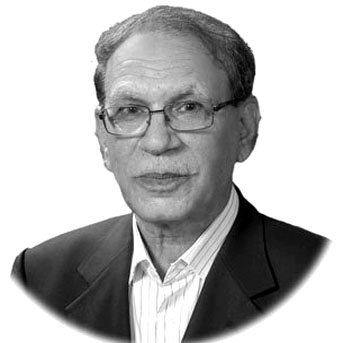Mohammad Jamil
THERE is a widespread perception that the best war machine in the world comprising the US and its NATO allies could not defeat the Taliban despite having spent over $ one trillion and lost around 2300 soldiers apart from thousands injured. The Washington Post has published a treatise authored by investigative reporter Craig Whitlock titled ‘At war with the truth‘, which is based on the secret information in ‘Afghanistan Papers – a secret history of the war’. He wrote that the US government tried to shield the identities of the vast majority of those interviewed for the project and concealed nearly all of their remarks. The Washington Post won release of the documents under the Freedom of Information Act after a three-year legal battle. “We were devoid of a fundamental understanding of Afghanistan — we didn’t know what we were doing,” Douglas Lute, a three-star Army General had told government interviewers in 2015.
The author quoting the report stated that since 2001, more than 775,000 US troops were deployed to Afghanistan, many repeatedly. Of those, 2300 died there and 20,589 were wounded in action, according to Defence Department figures. The interviews, through an extensive array of voices, bring into sharp relief the core failings of the war that persist to this day. They underscore how three Presidents — George W Bush, Barack Obama and Donald Trump — and their military commanders have been unable to deliver on their promises to prevail in Afghanistan. The interviews also highlighted the US government’s botched attempts to curtail runaway corruption, build a competent Afghan Army and police force and put a dent in Afghanistan’s thriving opium trade. Since 2001, the US has spent or appropriated between $934 billion and $978 billion, according to an inflation-adjusted estimate calculated by Neta Crawford, Co-Director of the Costs of War Project at Brown University.
In fact, the US from the day one had adopted a flawed strategy. After the US had bombed Afghanistan flat, it thought it had created enough ‘shock and awe’ and would be able to control Afghanistan with minimum troops. The Americans had primarily focused on hunting down Al Qaeda leaders and cadres not realizing that Afghanistan is a large territory and cannot be controlled by abysmally meagre force. Initially, for years, 6000 ISAF troops stayed put in Kabul, whereas they should have spread out to chase and capture Al Qaeda’s and Taliban’s fleeing rumpus. ISAF and NATO forces stayed around Kabul for years and were scared to go into hinterland, which provided opportunity to the militants to come back and consolidate. Anyhow, NATO-led forces did spread out to the south and the east, and its poor strength and low morale did not allow them to control the situation.
At that time, American soldiers were barely 12000, and they too remained in their Bagram redoubt, showing not much of soldiering to take on their adversaries. Years later in 2006, when they took to ramping up their forces in Afghanistan Talban had regrouped in their strongholds of the country’s east and south. Yet, the coalition forces were mostly less keen on fighting and more intent on spending out duty period in the country’s relatively peaceful north and west. It is because of their cowardice that the Taliban rule roost in 70 % of landmass in Afghanistan. In fact , the US and NATO Generals had lost the war in their minds before losing it on the ground in Afghanistan. Already in 2008, Mike Mullen had testified to a Congressional hearing that “America is not winning the war in Afghanistan but it can”.
The bland truth, however, is that America has practically lost the war, which is reflective of the failure of the world’s best ‘war machine’ – the US and NATO forces – that could not achieve any of the objectives set for it. In August 2009, as many as 56 bipartisan members of US Congress had moved a bill seeking an exit-strategy from Afghanistan. Obama Administration had been prevaricating on the issue, as it faced pressure from American public, which was wary of the war. On one hand it vowed to start withdrawing from July 2011, while on the other it intended to stay the course. In 2014, Obama Administration realized that it was in America’s interest to withdraw its forces from Afghanistan, and let the Afghan groups or factions resolve the issues themselves. President Donald Trump is poised to withdraw part of its forces to satisfy the Taliban.
Anyway, Afghanistan is facing death and destruction for the last four decades; firstly when the Soviet forces landed in Afghanistan and the US and the West planned the overt and covert operations against them. Secondly, in a civil war when once again people were the victim of the war on terror. Reportedly, there were efforts to bring the belligerents to the negotiating table to bring peace in Afghanistan. Afghan government representatives and former members of the Taliban had first time met in Saudi Arabia for talks to end the war in Afghanistan in 2007, but to no avail. The Taliban’s spokesman had more than once made it clear that the Taliban would not enter into negotiations so long as foreign troops remained on Afghan soil. However, they were not averse to the idea of working out an exit strategy of the US and NATO forces, which is being sorted out in US-Taliban talks.
—The writer is a senior journalist based in Lahore.








